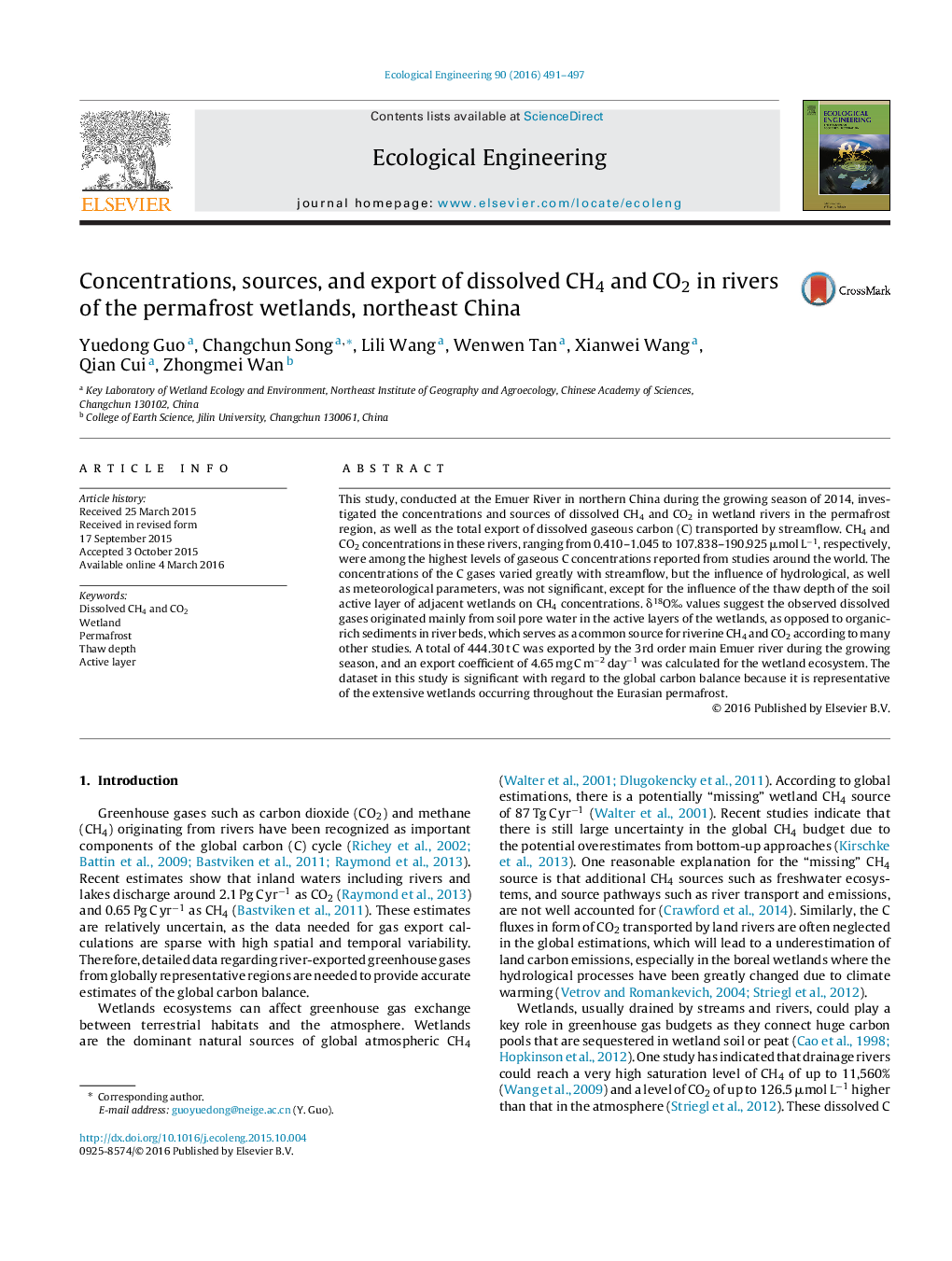| Article ID | Journal | Published Year | Pages | File Type |
|---|---|---|---|---|
| 4388699 | Ecological Engineering | 2016 | 7 Pages |
This study, conducted at the Emuer River in northern China during the growing season of 2014, investigated the concentrations and sources of dissolved CH4 and CO2 in wetland rivers in the permafrost region, as well as the total export of dissolved gaseous carbon (C) transported by streamflow. CH4 and CO2 concentrations in these rivers, ranging from 0.410–1.045 to 107.838–190.925 μmol L−1, respectively, were among the highest levels of gaseous C concentrations reported from studies around the world. The concentrations of the C gases varied greatly with streamflow, but the influence of hydrological, as well as meteorological parameters, was not significant, except for the influence of the thaw depth of the soil active layer of adjacent wetlands on CH4 concentrations. δ18O‰ values suggest the observed dissolved gases originated mainly from soil pore water in the active layers of the wetlands, as opposed to organic-rich sediments in river beds, which serves as a common source for riverine CH4 and CO2 according to many other studies. A total of 444.30 t C was exported by the 3rd order main Emuer river during the growing season, and an export coefficient of 4.65 mg C m−2 day−1 was calculated for the wetland ecosystem. The dataset in this study is significant with regard to the global carbon balance because it is representative of the extensive wetlands occurring throughout the Eurasian permafrost.
